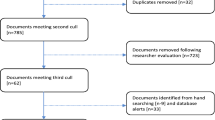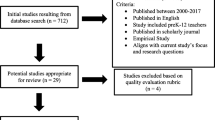Abstract
Information and guidance about college is critical for students to pursue postsecondary education. However, students attending urban schools often have less information and less access to information about college pathways than their peers at wealthy suburban schools. High school counselors are a primary source of college guidance but little is known about the form and content of the information they provide. Based on analyses of participant observations and interviews with urban high school guidance counselors and students, this research investigated what types of college guidance information were offered to students and how that information was framed. The findings revealed that counselors emphasized facts about higher education and procedures involved in applying to colleges. However, this information was provided without the necessary context for interpreting it, as shown by: (1) mixed signals regarding high school performance and college standards, (2) missing pieces of information about grade point averages, and (3) communication barriers related to college admissions data. The incomplete academic framework hindered students in making effective use of college guidance and advancing along the path to college.
Similar content being viewed by others
References
Adelman, C. (1999). Answers in the toolbox: Academic intensity, attendance patterns, and bachelor’s degree attainment. Washington, DC: U.S. Department of Education.
American Counseling Association. (2014). United States student-to-counselor ratios for elementary and secondary schools. http://www.counseling.org/. Last accessed 15 March 2015.
American School Counselor Association. (2013). Student-to-school–counselor ratio 2010–2011. http://www.schoolcounselor.org/press. Last accessed 15 March 2015.
Bailey, M., & Dynarski, S. (2011). Inequality in college entry and completion. In G. Duncan & R. Murnane (Eds.), Whither opportunity? Rising inequality, schools, and children’s life chances. New York, NY: Russell Sage Foundation.
Bergerson, A. A. (2009). College choice and access to college: Moving policy, research and practice to the 21st century. ASHE higher education report (Vol. 35). Hoboken, NJ: Wiley Periodicals.
Bloom, J. (2007). (Mis)reading social class in the journey towards college: Youth development in urban America. Teachers College Record, 109(2), 343–368.
Cabrera, A., Burkum, K., & La Nasa, S. (2005). Pathways to a four-year degree: Determinants of transfer and degree completion. In A. Seidman (Ed.), College student retention: A formula for success. Westport, CT: ACE/Praeger Series on Higher Education.
Cabrera, A., & La Nasa, S. (2000). Understanding the college-choice process. New Directions for Institutional Research, 107, 5–22.
Conley, D. T. (2010). College and career ready: Helping all students succeed beyond high school. San Francisco, CA: Jossey-Bass.
Corwin, Z. B., & Tierney, W. G. (2007). Getting there—and beyond: Building a culture of college-going in high schools. Los Angeles, CA: USC Center for Higher Education Policy Analysis.
Corwin, Z. B., Venegas, K. M., Oliverez, P. M., & Colyar, J. E. (2004). School counsel: How appropriate guidance affects educational equity. Urban Education, 39(4), 442–457.
Duncan, G. J., & Murnane, R. J. (Eds.). (2011). Whither opportunity: Rising inequality, schools, and children’s life chances. New York, NY: Russell Sage Foundation.
Ellwood, D., & Kane, T. J. (2000). Who is getting a college education: Family background and the growing gaps in enrollment. In S. Danzinger & J. Waldfogel (Eds.), Securing the future: Investing in children from birth to college. New York, NY: Russell Sage Foundation.
Farmer-Hinton, R. (2008). Social capital and college planning: Students of Color using school networks for support and guidance. Education and Urban Society, 41(1), 127–157.
Farmer-Hinton, R. (2011). On being college prep: Examining the implementation of a “college for all” mission in an urban charter school. The Urban Review, 43(5), 567–596.
Grodsky, E., & Jones, M. T. (2007). Real and imagined barriers to college entry: Perceptions of cost. Social Science Research, 36(2), 745–766.
Haskins, R., & Rouse, C. (2013). Time for change: A new federal strategy to prepare disadvantaged students for college. The Future of Children, Policy Brief Spring 2013, 1–7.
Heller, D. E. (Ed.). (2002). Condition of access: Higher education for lower income students. Westport, CT: American Council on Education/Praeger Press.
Hill, L. D. (2012). Environmental threats to college counseling strategies in urban high schools: Implications for student preparation for college transitions. The Urban Review, 44(1), 36–59.
Holland, N., & Farmer-Hinton, R. (2009). Leave no schools behind: The importance of a college culture in urban public schools. The High School Journal, 92(3), 24–43.
Horn, L. J., Chen, X., & Chapman, C. (2003). Getting ready to pay for college: What students and their parents know about the cost of college tuition and what they are doing to find out. NCES-2003-030. Washington, DC: National Center for Education Statistics.
Hossler, D., & Gallagher, K. S. (1987). Studying student college choice: A three-phase model and the implications for policymakers. College and University, 62(3), 207–221.
Hout, M. (2012). Social and economic returns to college education in the United States. Annual Review of Sociology, 38, 379–400.
King, J. E. (1996). The decision to go to college: Attitudes and experiences associated with college attendance among low-income students. Washington, DC: College Board.
Kirst, M. W. (2014). The college puzzle: A college success blog by Dr. Michael W. Kirst. http://collegepuzzle.stanford.edu. Accessed 27 Feb 2014.
Lee, V. E., & Ekstrom, R. B. (1987). Student access to guidance counseling in high school. American Educational Research Journal, 24(2), 287–310.
Lincoln, Y. S., & Guba, E. G. (1985). Naturalistic inquiry. Newbury Park, CA: Sage.
Litten, L. H. (1982). Different strokes in the applicant pool: Some refinements in a model of student college choice. The Journal of Higher Education, 53(4), 383–402.
Long, B. T. (2010). Grading higher education: Giving consumers the information they need. Washington, DC: Center for American Progress and The Hamilton Project.
Luna De La Rosa, M. (2006). Is opportunity knocking? Low-income students’ perceptions of college and financial aid. American Behavioral Scientist, 49(12), 1670–1686.
McDonough, P. M. (1997). Choosing colleges: How social class and schools structure opportunity. Albany, NY: State University of New York Press.
McDonough, P. M. (2005). Counseling matters: Knowledge, assistance, and organizational commitment in college preparation. In W. G. Tierney, Z. B. Corwin, & J. E. Colyar (Eds.), Preparing for college: Nine elements of effective outreach. Albany, NY: State University of New York Press.
MetLife. (2011). The MetLife survey of the American teacher: Preparing students for college and careers. New York, NY: MetLife.
Miles, M. B., & Huberman, A. M. (1994). Qualitative data analysis: An expanded sourcebook. Thousand Oaks, CA: Sage.
Morgan, J. M., & Soares, L. (2010). The social life of college information: Relationships and experiences as tools for enhancing college decision making. Washington, DC: Center for American Progress.
National Center for Education Statistics. (2013). Common core of data. Washington, DC: U.S. Department of Education.
Noguera, P. (2001). Racial politics and the elusive quest for excellence and equity in education. Education and Urban Society, 34(1), 18–41.
Oyserman, D., & Fryberg, S. (2006). The possible selves of diverse adolescents: Context and function across gender, race and national origin. In C. Dunkel & J. Kerpelman (Eds.), Possible selves: Theory, research and application. New York, NY: Nova Science Publishers.
Perna, L. W. (2004). Impact of student aid program design, operations, and marketing on the formation of family college-going plans and resulting college-going behaviors of potential students. Boston, MA: The Education Resources Institute.
Perna, L. W. (2006). Studying college access and choice: A proposed conceptual model. In J. C. Smart (Ed.), Higher education: Handbook of theory and research (Vol. 21). Dordrecht: Kluwer.
Perna, L. W., Rowan-Kenyon, H. T., Thomas, S. L., Bell, A., Anderson, R., & Li, C. (2008). The role of college counseling in shaping college opportunity: Variations across high schools. The Review of Higher Education, 31(2), 131–159.
Plank, S. B., & Jordan, W. J. (2001). Effects of information, guidance, and actions on postsecondary destinations: A study of talent loss. American Educational Research Journal, 38(4), 947–979.
Reid, M. J., & Moore, J. L., I. I. I. (2008). College readiness and academic preparation for postsecondary education: Oral histories of first-generation urban college students. Urban Education, 43(2), 240–261.
Roderick, M., Nagaoka, J., & Coca, V. (2009). College readiness for all: The challenge for urban high schools. The Future of Children, 19(1), 185–210.
Rosenbaum, J. (2001). Beyond college for all: Career paths for the forgotten half. New York, NY: Russell Sage Foundation.
Rosenbaum, J., Miller, S. R., & Krei, M. S. (1996). Gatekeeping in an era of more open gates: High school counselors’ view of their influence on students’ college plans. American Journal of Education, 104(4), 257–279.
Ross, T., Kena, G., Rathbun, A., KewalRamini, A., Zhang, J., Kristapovich, P., et al. (2012). Higher education: Gaps in access and persistence study. U.S. Department of Education. Washington, DC: Government Printing Office.
Stage, F. K., & Hossler, D. (1989). Differences in family influences on college attendance plans for male and female ninth graders. Research in Higher Education, 30(3), 301–315.
Stanton-Salazar, R. D., & Dornbusch, S. M. (1995). Social capital and the reproduction of inequality: Information networks among Mexican-origin high school students. Sociology of Education, 68(2), 116–135.
Strauss, A., & Corbin, J. (1990). Basics of qualitative research: Grounded theory procedures and techniques. Newbury Park, CA: Sage.
Talbert-Johnson, C. (2004). Structural inequities and the achievement gap in urban schools. Education and Urban Society, 37(1), 22–36.
Terenzini, P. T., Cabrera, A. F., & Bernal, E. M. (2001). Swimming against the tide: The poor in American higher education (no. 2001-1). New York, NY: College Entrance Examination Board.
Torche, F. (2011). Is a college degree still the great equalizer? Intergenerational mobility across levels of schooling in the United States. American Journal of Sociology, 117(3), 763–807.
Welton, A. D., & Martinez, M. A. (2014). Coloring the college pathway: A more culturally responsive approach to college readiness and access for students of color in secondary schools. The Urban Review, 46(2), 197–223.
Author information
Authors and Affiliations
Corresponding author
Rights and permissions
About this article
Cite this article
Shamsuddin, S. Taken Out of Context: Piecing Together College Guidance Information in Urban High Schools. Urban Rev 48, 101–122 (2016). https://doi.org/10.1007/s11256-015-0347-4
Published:
Issue Date:
DOI: https://doi.org/10.1007/s11256-015-0347-4




